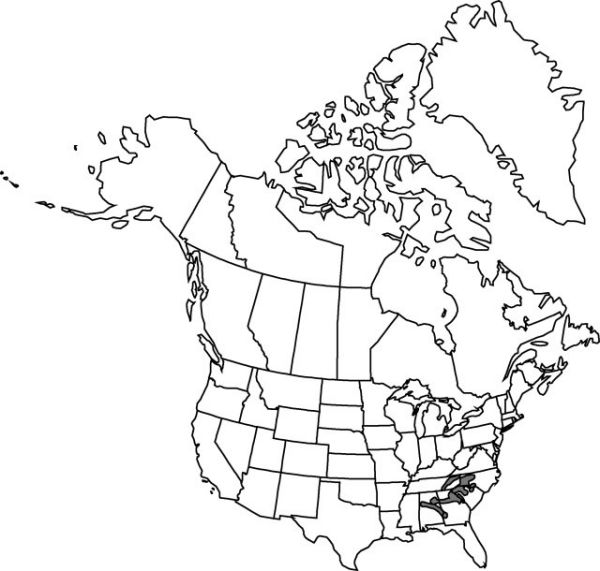Difference between revisions of "Trillium rugelii"
J. Bot. 39: 331, plate 426, fig. B1901 (as rugeli).
FNA>Volume Importer |
imported>Volume Importer |
||
| (3 intermediate revisions by 2 users not shown) | |||
| Line 7: | Line 7: | ||
}} | }} | ||
|common_names=Southern nodding trillium | |common_names=Southern nodding trillium | ||
| + | |special_status={{Treatment/ID/Special_status | ||
| + | |code=E | ||
| + | |label=Endemic | ||
| + | }} | ||
|basionyms= | |basionyms= | ||
|synonyms= | |synonyms= | ||
| Line 33: | Line 37: | ||
-->{{#Taxon: | -->{{#Taxon: | ||
name=Trillium rugelii | name=Trillium rugelii | ||
| − | |||
|authority=Rendle | |authority=Rendle | ||
|rank=species | |rank=species | ||
| Line 47: | Line 50: | ||
|publication title=J. Bot. | |publication title=J. Bot. | ||
|publication year= | |publication year= | ||
| − | |special status= | + | |special status=Endemic |
| − | |source xml=https:// | + | |source xml=https://bitbucket.org/aafc-mbb/fna-data-curation/src/2e0870ddd59836b60bcf96646a41e87ea5a5943a/coarse_grained_fna_xml/V26/V26_113.xml |
|genus=Trillium | |genus=Trillium | ||
|subgenus=Trillium subg. Trillium | |subgenus=Trillium subg. Trillium | ||
Latest revision as of 21:11, 5 November 2020
Rhizomes short, thick, tapered to point distally. Scapes 1–3, round in cross section, 1.5–4 dm, robust, glabrous. Bracts sessile to subsessile; blade bright green, veins not engraved, rhombic, broader than long, 6–15 × 6–16 cm, not glossy, base attenuate, apex acuminate. Flower strongly recurved below bracts; sepals shorter than petals and somewhat obscured by them, spreading, green, very rarely streaked with red, lanceolate-elliptic, 15–40 × 7–17 mm, margins entire, apex acuminate; petals recurving in distal 1/2 in most forms (forms from Alabama with petals slightly narrower and strongly recurved just above base), white, rarely 2-colored with base rose or dark purple and white, adaxial veins conspicuous, broadly ovate-elliptic, 2.5–5 × 0.8–3.5 cm, heavy-textured, margins entire, without undulations, apex abruptly acuminate; stamens ± straight, 8–18 mm; filaments deep purple, 2–8 mm, slender; anthers ± straight, dark purple, 12–16 mm, thin, dehiscence introrse; connectives not extended beyond anther sacs; ovary prominent, purple-streaked or maroon distally or throughout, flask-shaped, 6-angled, 14–17 mm, widely attached at base; stigmas recurved, distinct, dark purple, not lobed adaxially, subulate, 2–5 mm, fleshy; pedicel strongly recurved beneath bracts, 1–7+ cm. Fruits baccate, dark reddish purple, fragrance faintly of fruit, ovoid to orbicular, 1.7 × 2 cm, fleshy, juicy. 2n = 10.
Phenology: Flowering mid spring (mid Apr–May).
Habitat: Deciduous forest hillsides and coves, inner piedmont, mostly in alluvial soils along stream banks and flats
Elevation: 200–700 m
Distribution

Ala., Ga., N.C., S.C., Tenn.
Discussion
The Alabama plants of Trillium rugelii differ from those in the Great Smoky Mountains region in having usually smaller bracts, narrower ovate petals strongly recurved from the base, and strongly fragrant flowers with the odor of old-fashioned garden roses. The anther color and structure are the same as in the mountain form. Hybrids between T. vaseyi and T. rugelii occur frequently.
Trillium rugelii has been much confused with T. cernuum in past floras, and it is the taxon upon which most reports of T. cernuum south of Virginia are based.
Selected References
None.